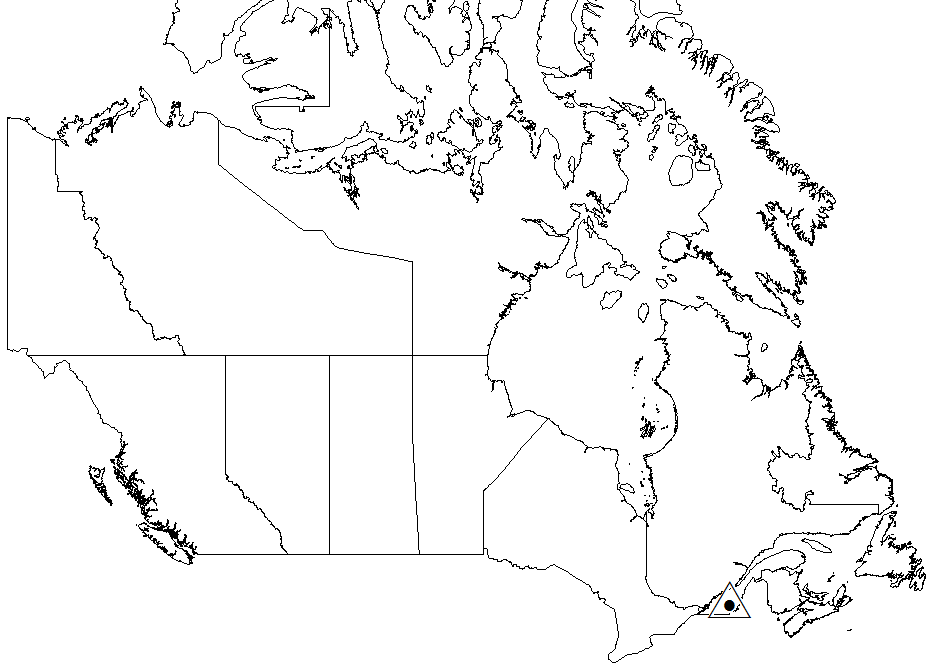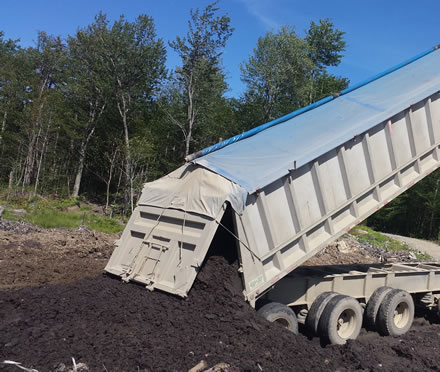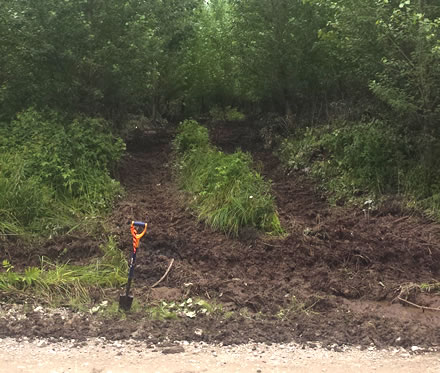Eastern Townships wood ash trial — Hybrid poplar stands

Location
Southern Quebec
Ecozone: Mixedwood Plains
Elevation: 230 to 340 m
Climate
1981 to 2010 monthly climate point estimates generated from the Natural Resources Canada climate modeling project.
Mean annual precipitation: 1,204 mm
Mean minimum temperature in January: −16.5°C
Mean maximum temperature in July: 24.2°C
Site description
Before the experiment, each site supported 60- to 80-year-old mixed deciduous stands dominated by sugar maple (Acer saccharum Marsh.) with some American basswood (Tilia americana L.), American beech (Fagus grandifolia Ehrh.), white ash (Fraxinus americana L.), and butternut (Juglans cinerea L.). All the stands had previously been clearcut or selection cut. The soils have developed on tills with gentle to moderate slopes and have a sandy to loamy sand to sandy loam texture. The soils are typically Orthic Humo-Ferric or Ferro-Humic Podzols with a 10- to 15-cm forest floor layer consisting primarily of leaves and twigs.
Ash description
The ash used for this trial was produced in a biomass boiler. The ash feedstock consisted of hardwood and softwood bark and shavings. Only bottom ash was used for the experiment, and the ash was not pretreated before application.

Dump truck delivering wood ash to be spread on Eastern Townships hybrid poplar plots.

Entrance to an Eastern Townships hybrid poplar wood ash trial plot.
Treatment description
Before plot establishment, all three sites were clearcut (2009 to 2012). After clearcut, each site received 120 Mg per ha of paper biosolids and 10 Mg per ha of lime mud. Sites were then planted with hybrid poplar at a density of 1,111 stems per ha. In the summer of 2015, four treatments were applied using an experimental design to compare both the individual and combined effects of wood ash and paper biosolids applications, and weed control. Treatments included (1) no additional soil amendments applied or an application of 100 Mg per ha of paper biosolids and 15 Mg per ha of wood ash; and (2) no weed control or weed control using herbicide. The quantity of ash applied (Mg per ha) was calculated based on the fresh wet weight of the ash. Soil amendments were applied to the soil surface using a mechanical spreader. Treatments were replicated in two separate locations (blocks) at each of the three sites when the experiment was set up.
Monitoring
Monitoring treatment effects on trees and soil chemistry is ongoing. Data being collected include:
- Trees
- Height and diameter
- Foliar nutrients
- Soil chemistry
- Acidity (pH)
- Total carbon and nitrogen
- Available phosphorus
- Exchangeable cations and acidity
- Soil solution chemistry via plant root simulator probes
Main contact
Nicolas Bélanger, Professor, Department of Science and Technology, Université TÉLUQ
Page details
- Date modified: